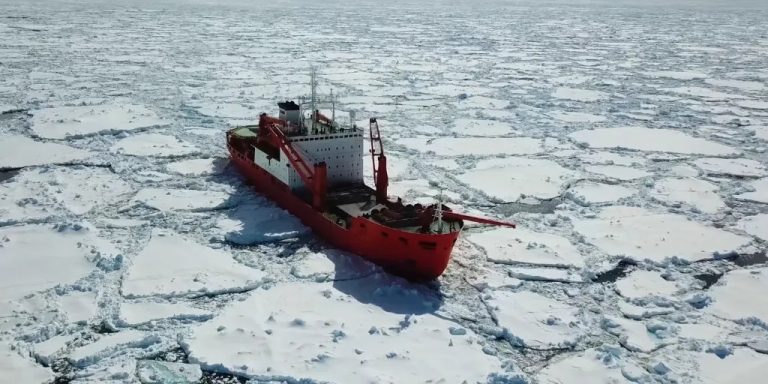Vijay Jayaraj
Modern climate warming, contrary to popular (albeit fading) narrative, has enabled human civilization to flourish to unprecedented levels.
About 10,000 years ago, at the end of the last glacial advance, our relatively warm Holocene era began and spurred the development of agriculture and more sophisticated technology. This warmth is destined to end when the next continental ice mass arrives, and the exact time has not yet been announced by nature.
Although postglacial warming is generally viewed as a positive, climate alarmists would have us believe that future warming will have catastrophic effects on ecosystems.
nonsense.
First, there is no available scientific evidence that the warming of the past seventy years or so—due to industrial activity that has significantly increased the concentration of carbon dioxide in the atmosphere—has increased extreme weather events or adversely affected human life.
Second, this projection of the future does not take into account the inability to establish a paleoclimate record for carbon dioxide2 as a major determinant of global temperature. In fact, rising temperatures are often responsible for rising carbon dioxide concentrations2rather than the other way around.
The history of the Earth raises all kinds of interesting questions. For example, Antarctica was once a dense rainforest that supported many life forms. Today it is the most desolate and dangerous continent on earth. Who can say which one is better? It's a terrible place for a beach vacation, but perfect for a penguin colony.
However, climate alarmists point to the Earth's poles as a source of concern. It is speculated that the melting ice will cause sea levels to rise to the point that coastal cities are inundated. But the fact is that the slow rise in sea levels that begins as continental glaciers recede does not pose a threat to human civilization. In addition, we already have long-tested and successful coping mechanisms in place in places like the Netherlands, where dyke systems have held back seawater for centuries.
Scaremongers would have us believe that in the Arctic, melting sea ice threatens polar bears. However, the number of bears has actually increased.
Despite alarmists' concerns about melting ice, data shows ice volumes are relatively high and governments are spending millions to break up the Arctic ice to facilitate world shipping.
It's ironic that tax dollars fund the massive icebreakers that plow the Arctic ice, while commuters are foolishly told to abandon the internal combustion engine technology that powers some ships.
While the headlines focus on melting Arctic ice, the more substantive story is the design of new trade routes through the frozen region. Breaking the sea ice for navigation is a historic effort, with countries such as Russia and the United States supporting the creation of shorter trade routes, primarily for transporting oil and gas.
The Arctic's Northern Sea Route (NSR) is 4,970 miles away from the traditional Suez Canal passage, shortening the path between Europe and Asia by 30-40%. NSR significantly reduces the time and fuel consumption of world shipping.
nuclear icebreaker
Russia envisions a future for global shipping that will redraw the trade map between Eurasia and the Asia-Pacific through an icy “Silk Road,” bypassing the traditional southern route of the Suez Canal and the Cape of Good Hope. The country seeks to increase cargo volumes to 240 million tons by 2035 from 36 tons in 2023.
Studies of ship seaworthiness predict that the Northern Sea Route will be extremely profitable for Russia and other Arctic states over the next seventy years.
Russia has the dominant icebreaker fleet, with six nuclear-powered ships ranking among the top in the world. These include the Arctic, the world's largest and most powerful icebreaker. Displacing 33,530 tons, the giant ship hurtled through open water at 22 knots and methodically penetrated 9 feet of ice.
But it’s not just Russia. Earlier this year, Canada, the United States and Finland jointly signed the “Ice Pact” to challenge Russia and China's icebreaker dominance and mark a new power game in Arctic waters. The agreement is expected to provide funding for up to 90 new icebreakers.
While climate alarmists obsess over the false threats of melting ice and rising sea levels, the more substantive story is of purposefully designing new trade routes in the frozen Arctic to meet the transportation needs and energy needs of world commerce.
Perhaps today’s climate alarmism will be seen more widely as an unfounded, thoughtless and wasteful distraction, allowing more attention to be given to serious work such as countries working towards positive goals in the Arctic.
This review was first published in the Toronto Sun on November 29, 2024.
Vijay Jayaraj is a scientific research assistant carbon monoxide2 allianceArlington, VA. he He holds a master's degree in environmental science from the University of East Anglia, UK, a postgraduate degree in energy management from Robert Gordon University, and a bachelor's degree in engineering from Anna University, India.
Relevant
